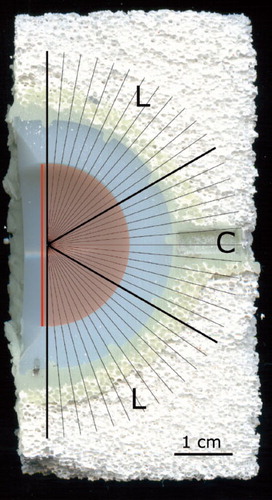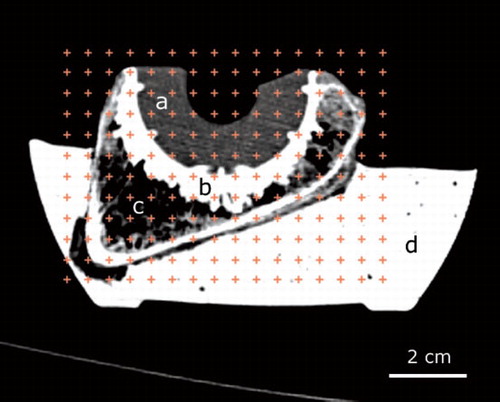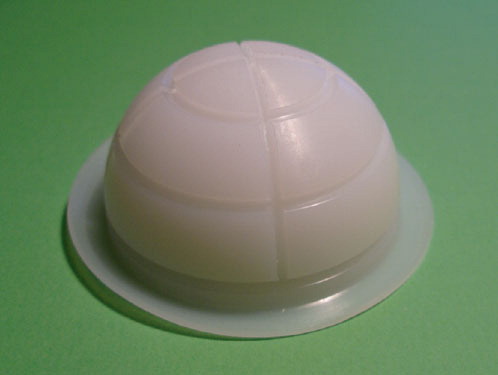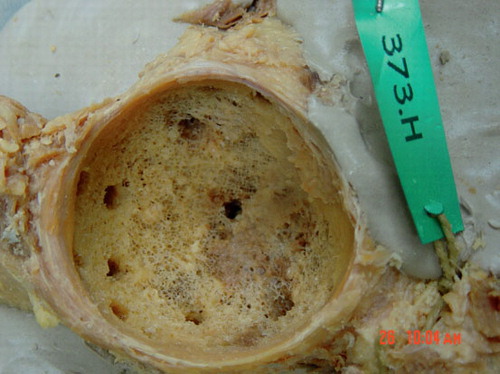Figures & data
Figure 3. The template with test lines placed on a sample of ceramic. Note the close contact between the unflanged cup and the ceramic. Lateral segments are labeled L, and the central segment C.

Figure 4. The counting grid placed on a CT image of cadaveric bone. Opera cup (a), cement (b), cadaveric bone (c), and Vel-Mix stone (d).

Table 1. Intraacetabular pressures in ceramic. Values are median (95% confidence interval)
Table 2. Thickness of cement mantle, depth of penetration, and area of penetration per 5° sector in ceramic. Values are median (95% confidence interval)
Table 3. Intraacetabular pressures in cadaveric bone. Values are median (95% confidence interval)

